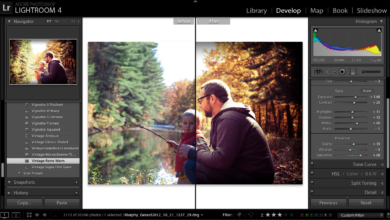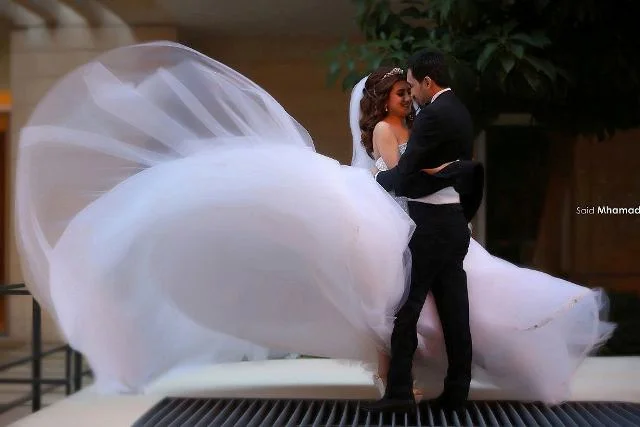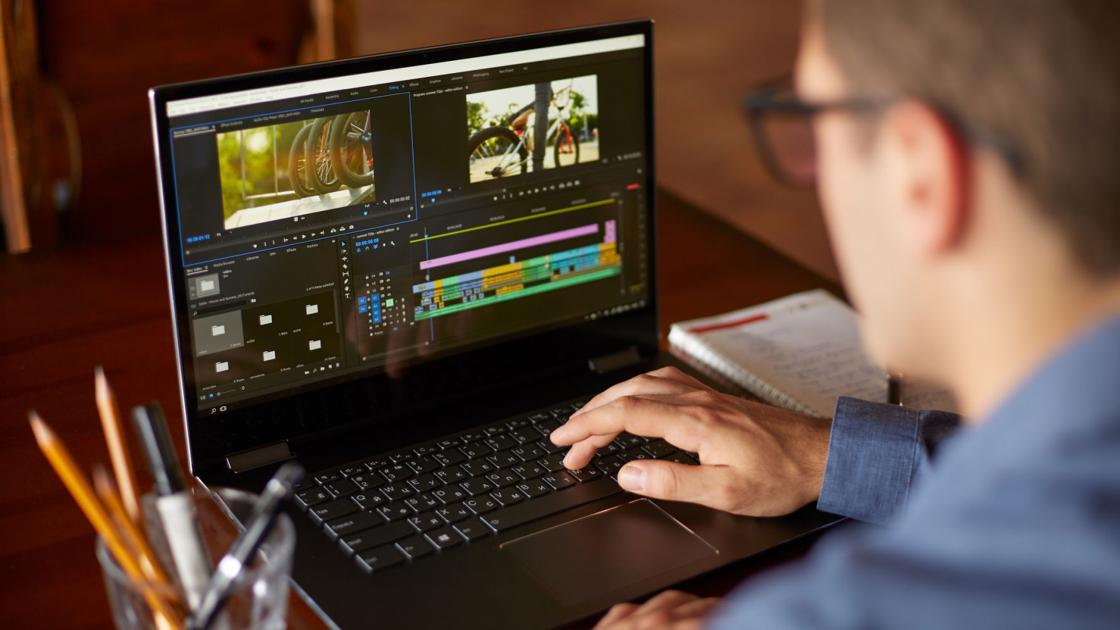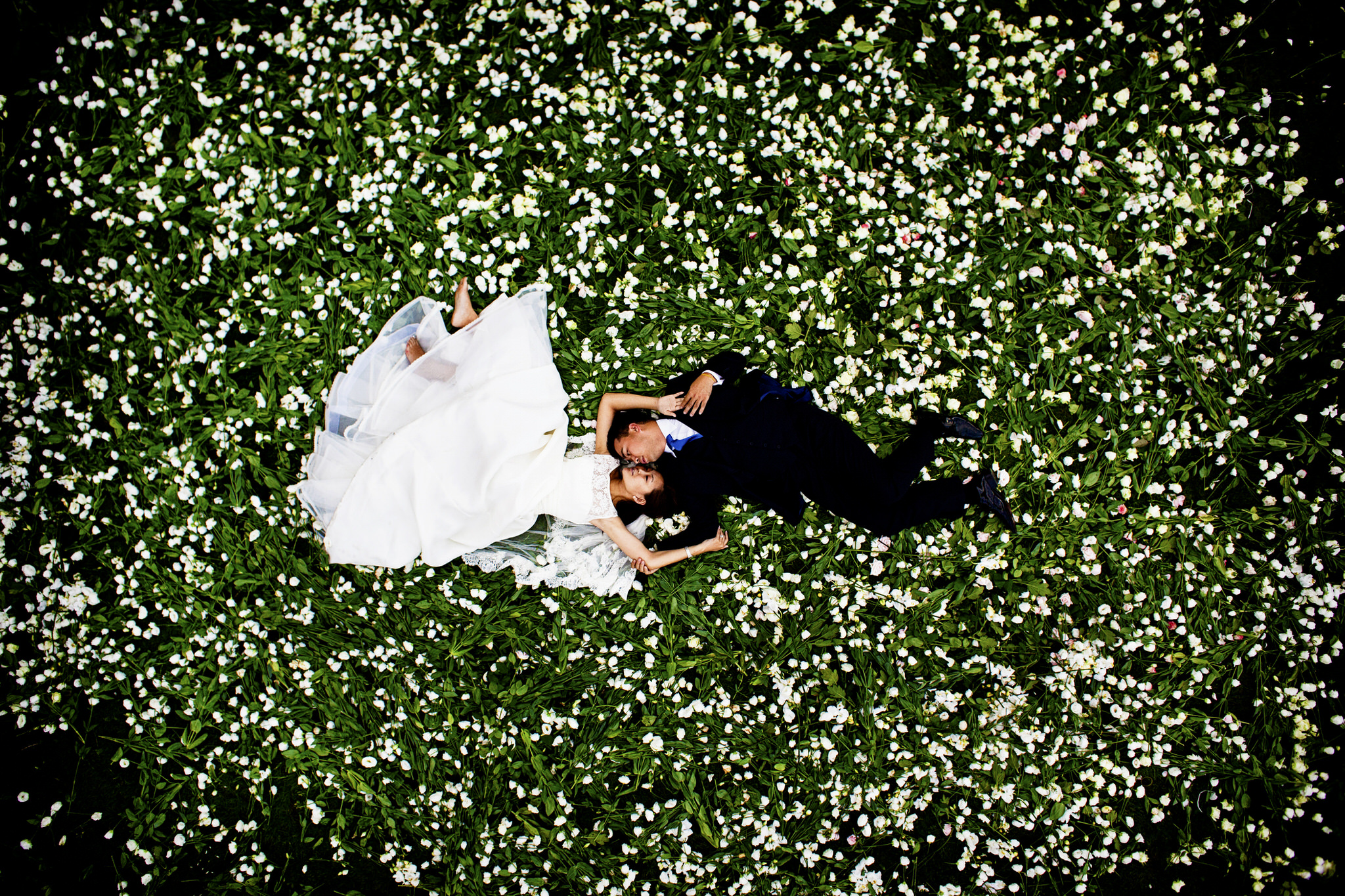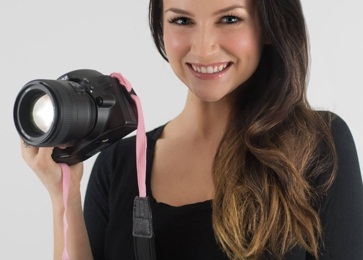
Top 10 AI Features Every Photographer Needs in 2024
Did you know that by the year 2024, artificial intelligence (AI) is expected to be integrated into 75% of all commercial applications? This staggering statistic highlights the growing significance and impact of AI in various industries, including photography. In this article, we will explore the top 10 AI features that photographers should consider incorporating into their workflow in 2024.
These AI tools and technologies aim to enhance the photography process, improve image quality, and boost efficiency, allowing photographers to achieve impressive results.
Revolutionizing Photography with Smart Machines
Smart machines powered by artificial intelligence are transforming the field of photography. In this section, we will explore how these technologies are revolutionizing the way photographers approach their craft. From AI-powered cameras to machine learning algorithms, smart machines are enabling photographers to capture stunning images with enhanced precision and efficiency.
We will delve into the advancements in camera hardware, image recognition, and automation that are driving this revolutionary change.
| Advancements in Smart Machines | Impact on Photography |
|---|---|
| AI-powered cameras | Enhanced image quality and intelligent scene analysis |
| Machine learning algorithms | Improved autofocus, exposure, and color accuracy |
| Automated image recognition | Efficient categorization and organization of photos |
| Advanced automation | Streamlined workflow and time-saving benefits |
These advancements in smart machines are shaping the future of photography. AI-powered cameras leverage complex algorithms and deep learning models to analyze scenes, identify subjects, and adjust camera settings for optimal results. The integration of machine learning algorithms enhances autofocus capabilities, ensuring precise and sharp focus in every shot. Additionally, automated image recognition technologies enable photographers to easily categorize and organize their vast collection of photos, saving valuable time in the post-shooting workflow.
Furthermore, the advanced automation features provided by smart machines streamline the entire photography process. From capturing images to post-processing, photographers can rely on AI-driven tools and technologies to optimize their workflow, resulting in increased efficiency and higher productivity. This revolution in photography is enabling photographers to push the boundaries of their creative vision and capture breathtaking images that were once unimaginable.
Integration of AI in Photography for Cutting-Edge Results
The integration of AI in photography is revolutionizing the industry, delivering cutting-edge results that push the boundaries of what is possible. With the advancement of AI technology, photographers now have access to a range of AI features that enhance their workflow and elevate the quality of their images.
Intelligent Autofocus for Precision
One of the key AI integrations in photography is intelligent autofocus. By leveraging AI algorithms, photographers can achieve unprecedented precision in their shots. The AI-powered autofocus analyzes the scene and subject, determining the optimal focus point to ensure sharp and clear images. Even in challenging lighting conditions or with fast-moving subjects, intelligent autofocus enables photographers to capture every moment with accuracy and precision.
Real-Time Image Enhancement for Quality Boost
Real-time image enhancement is a game-changer for photographers seeking to elevate the quality of their images. AI algorithms analyze the image in real-time, identifying areas that can be enhanced, such as exposure, color balance, and sharpness. By automatically applying these enhancements, photographers can capture images with improved quality and visual appeal. The real-time nature of this AI feature eliminates the need for extensive post-processing, allowing photographers to focus on capturing the perfect shot.
Automated Settings Adjustment for Various Scenarios
Photographers often encounter different shooting scenarios that require adjustments in camera settings. With AI-powered automated settings adjustment, photographers can optimize their camera settings for various scenarios with ease. The intelligent algorithms analyze the scene and adjust settings such as exposure, shutter speed, and ISO accordingly. This feature simplifies the photography process and frees photographers to focus on their composition and creativity rather than technical settings. Whether shooting in low-light conditions, capturing fast-paced action, or exploring landscape photography, automated settings adjustment ensures optimal camera settings for every scenario.
By embracing the integration of AI in photography, photographers can achieve cutting-edge results that were once beyond imagination. The intelligent autofocus, real-time image enhancement, and automated settings adjustment are just a few examples of the AI-powered features that are transforming the photography industry.
With these advancements, photographers can unlock their creative potential and deliver stunning images that captivate audiences around the world.
Creative Composition Tools Powered by Artificial Intelligence
Creative composition is a crucial aspect of photography, and artificial intelligence (AI) is revolutionizing the way photographers approach it. AI-powered tools provide innovative composition assistance, helping photographers create visually compelling images that have a strong impact on viewers. From rule of thirds guidelines to leading lines suggestions, these tools offer actionable insights and recommendations to enhance the overall composition of photographs.
One of the key benefits of AI-powered composition tools is their ability to analyze and understand the elements within an image. By leveraging advanced algorithms and machine learning, these tools can recognize patterns, shapes, and visual elements that contribute to a well-composed photograph. This understanding enables photographers to make informed decisions and take their compositions to the next level.
AI-powered composition tools can provide various suggestions and guidelines to photographers. For example, they can recommend the placement and alignment of elements based on the rule of thirds, a fundamental principle in composition. These tools can also identify leading lines, which are lines within an image that draw the viewer’s attention and guide their gaze through the photograph. By incorporating these suggestions, photographers can create dynamic and visually captivating compositions.
Furthermore, AI-powered composition tools can offer insights on color theory and harmony, helping photographers select color palettes that enhance the visual impact of their images. They can also provide recommendations on balancing symmetry and asymmetry, encouraging photographers to experiment with different compositional techniques and create unique and engaging compositions.
Overall, AI-powered composition tools empower photographers with valuable assistance, allowing them to make informed decisions and explore new creative possibilities. By combining their artistic vision with the innovative capabilities of AI, photographers can elevate the visual impact of their compositions and deliver exceptional imagery to their audience.
Post-Processing Workflow Transformed Through Editing Automation
The post-processing workflow plays a crucial role in bringing out the true potential of a photograph. Traditionally, photographers have spent countless hours manually editing their images to achieve the desired results. However, with the advent of AI-powered editing automation tools, this time-consuming and labor-intensive process is being revolutionized.
AI algorithms are now capable of learning and adapting editing styles, providing photographers with a powerful tool to automate and streamline their post-processing workflow. By analyzing editing patterns, preferences, and trends, AI algorithms can offer tailored suggestions and automate repetitive tasks, allowing photographers to achieve consistent results and apply their preferred editing styles with ease.
One of the significant time-saving benefits of AI in post-processing is the automation of tasks such as image selection, color grading, and retouching. These AI-powered tools can analyze the content of the image and make intelligent adjustments to improve its overall quality. This automation not only saves photographers considerable time but also ensures a more efficient workflow, allowing them to focus more on their creative vision and less on tedious editing tasks.
By integrating AI into their post-processing workflow, photographers can experience a range of time-saving benefits while achieving high-quality results. The ability to automate and streamline editing tasks not only improves efficiency but also allows photographers to experiment with different styles and techniques. With AI as their ally, photographers can take their post-processing workflow to new heights, unleashing their creative potential.
| Benefits of AI in Post-Processing |
|---|
| Time-saving automation of repetitive tasks |
| Consistent results and application of preferred editing styles |
| Improved efficiency and workflow |
| Opportunity to focus on creative vision |
Advanced Scene Recognition for Perfect Captures
Advanced scene recognition powered by AI technology is revolutionizing photography, enabling photographers to capture perfect shots every time. With the help of sophisticated AI algorithms, photographers can now analyze the scene, identify key elements, and receive optimal camera settings suggestions to achieve the desired results.
From recognizing breathtaking landscapes to detecting faces with stunning clarity, AI-powered scene recognition features assist photographers in capturing truly remarkable images in any situation. These advanced technologies take into account the unique characteristics of each scene and subject, ensuring that photographers can achieve perfect captures with ease.
By harnessing the power of AI-based scene recognition, photographers can focus more on their creativity and artistic vision, knowing that their camera settings are optimized for the specific environment. This empowers photographers to push the boundaries of their craft and create images that leave a lasting impact on viewers.
To visualize the capabilities of advanced scene recognition, take a moment to appreciate the following image:
| Feature | Description |
|---|---|
| Advanced Scene Recognition | AI algorithms analyze the scene to identify key elements and characteristics. |
| Optimal Camera Settings | Suggestions for camera settings are provided based on the scene and subject. |
| Breathtaking Landscapes | AI-powered recognition ensures accurate capture of stunning landscapes. |
| Facial Detection with Clarity | Photographers can capture faces with exceptional clarity and detail. |
As demonstrated in the image and table above, advanced scene recognition powered by AI technology is a game-changer for photographers who strive for perfection in their captures. By leveraging these cutting-edge features, photographers can truly elevate their craft and create images that mesmerize audiences.
AI-Driven Image Restoration Techniques
AI-driven image restoration techniques have revolutionized the way photographers restore and improve the quality of their images. Through advanced AI algorithms, photographers can achieve professional-level results by harnessing the power of AI for image restoration.
Noise Reduction for Crisp Photographs
Noise reduction is an essential aspect of image restoration, especially in challenging lighting conditions or high-ISO situations. AI algorithms analyze image data to identify noise patterns and effectively reduce noise while preserving important details. By leveraging AI-driven noise reduction techniques, photographers can produce crisp and clean photographs that captivate viewers with their clarity and quality.
Blurriness Fix for Sharper Images
Blurriness can often be an unavoidable outcome of fast-paced or challenging shooting conditions. However, with AI-based blurriness fix techniques, photographers can salvage blurry or out-of-focus shots and transform them into sharper images. Leveraging AI algorithms, these techniques intelligently enhance image sharpness and overall quality, enabling photographers to present their work with precision and clarity.
Automated Enhancement for Professional Photo Finishing
AI-powered automated enhancement tools are revolutionizing the process of professional photo finishing. These advanced algorithms intelligently adjust exposure, color balance, and other parameters to achieve a polished and professional look in photographs. With automated enhancement features, photographers can now streamline their editing process and deliver high-quality final images efficiently.
By harnessing the power of AI, photographers can take their images to the next level. Automated enhancement algorithms analyze the image data, identifying areas that can be improved, such as exposure levels, color accuracy, and overall tone. These algorithms then make precise adjustments, enhancing the image quality and achieving stunning results.
Whether in portrait photography, landscape shots, or product imagery, automated enhancement plays a vital role in professional photo finishing. It ensures that every image is optimized for maximum visual impact, capturing the attention of viewers and conveying the desired mood or message.
With AI-powered automated enhancement tools, photographers can save valuable time and effort in the editing process. Instead of manually tweaking each individual setting, these tools intelligently apply enhancements, allowing photographers to focus on their creative vision and storytelling.
Automated enhancement is a game-changer for professional photographers who need to consistently deliver high-quality images in a fast-paced industry. These AI-driven tools make it easier than ever to achieve a polished and professional look, ensuring that every photograph stands out and leaves a lasting impression.
The Future of AI Image Editing Software
The future of AI image editing software holds immense potential for transforming the field of photography. As we look ahead to the coming years, innovative advancements in AI technology are set to revolutionize how photographers edit and enhance their images. In this section, we will explore the rise of two prominent AI-driven image editing software solutions, Adobe Firefly and Luminar Neo, and highlight the cutting-edge features of Topaz AI Gigapixel.
The Rise of Adobe Firefly and Luminar Neo
Adobe Firefly and Luminar Neo are rapidly gaining popularity as leading AI-driven image editing software solutions. These platforms offer photographers an array of advanced AI capabilities and a seamless user experience. With intuitive interfaces and powerful features, Adobe Firefly and Luminar Neo streamline the editing workflow, enabling photographers to achieve professional-grade results efficiently and effortlessly.
Innovative Features of Topaz AI Gigapixel
Topaz AI Gigapixel is a standout AI-powered image editing software renowned for its groundbreaking features. One of the prominent capabilities of Topaz AI Gigapixel is its advanced upscaling algorithms, which allow photographers to enlarge their images while preserving exceptional quality and intricate details. Furthermore, the AI-driven noise reduction feature of Topaz AI Gigapixel enhances image clarity and reduces unwanted noise, ensuring superior image quality even in challenging shooting conditions.
With its ability to enhance image quality without compromising sharpness or clarity, Topaz AI Gigapixel has become an indispensable tool for photographers seeking to maximize the potential of their images. Its innovative features empower photographers to unlock new creative possibilities and elevate their work to greater heights.
As we embrace the future of AI image editing software, the rise of Adobe Firefly and Luminar Neo, along with the cutting-edge features of Topaz AI Gigapixel, herald a new era of possibilities for photographers. These advancements in AI technology present a world of endless creativity and limitless potential, allowing photographers to push boundaries, capture breathtaking images, and deliver unparalleled results.
Machine Learning Algorithms: Photography’s New Backbone
Machine learning algorithms are revolutionizing the field of photography, serving as the backbone that enables photographers to achieve remarkable results. These advanced algorithms are transforming various aspects of photography, from raw photo processing to the creation of AI-generated art and neural network-based enhancements.
One of the significant applications of machine learning algorithms in photography is in the realm of raw photo processing. By leveraging these algorithms, photographers can optimize their workflow and extract the full potential of their images. Machine learning algorithms can automatically analyze and adjust various parameters such as exposure, white balance, and color grading, resulting in enhanced image quality and tonal balance.
Another exciting application of machine learning in photography is the upscaling of images without sacrificing quality. This technology, also known as super-resolution, utilizes deep learning algorithms to generate high-resolution images from low-resolution inputs. With machine learning algorithms, photographers can enlarge their images while preserving important details and achieving exceptional image quality.
A remarkable area where machine learning algorithms have made a significant impact is in AI-generated art. These algorithms can learn from vast datasets of paintings, photographs, and art styles, enabling photographers to transform their images with artistic filters, brushstrokes, and visual effects. The integration of machine learning algorithms with photography has opened up new creative possibilities, allowing photographers to explore innovative visual styles and push the boundaries of their artistic expression.
The role of machine learning algorithms in photography goes beyond image processing and artistic enhancements. Neural networks, a type of machine learning algorithm, are also instrumental in driving advancements in object recognition and scene analysis. Through deep learning models, photographers can benefit from improved object detection, accurate subject tracking, and intelligent scene recognition, resulting in more precise and efficient photography techniques.
As machine learning algorithms continue to evolve and adapt to the needs of photographers, their impact on the industry will only grow stronger. The integration of machine learning algorithms into photography workflows has the potential to revolutionize the way photographers capture, process, and create images. By harnessing the power of machine learning, photographers can unlock new levels of creativity and achieve stunning results that were once unimaginable.
Ethical Considerations in AI-Generated Art and Imagery
As the use of AI-generated art and imagery continues to grow in the photography industry, it is crucial to address the ethical considerations surrounding this emerging trend. Photographers and artists must navigate the challenges of maintaining creative integrity and determining the authenticity of AI-generated images.
Respecting creative integrity is paramount when working with AI-generated art and imagery. It is essential to give proper credit to the original artists or photographers whose work may have served as inspiration. This ensures that their contributions are acknowledged and that AI-generated work does not infringe upon copyright or intellectual property rights.
The dilemma arises when distinguishing between realistic and fake images created through AI algorithms. The advancement in AI technology can produce images that are incredibly convincing, blurring the line between genuine and AI-generated content. This presents a challenge for both creators and consumers of art and photography.
Transparency and disclosure are key factors in addressing the authenticity dilemma. It is important for photographers and artists to disclose the use of AI in their creations, ensuring viewers are aware of the process involved. This transparency allows individuals to make informed judgments about the value and originality of AI-generated art and imagery.
By exploring the ethical implications of AI-generated art and imagery, the photography community can foster an environment that encourages responsible use and respects the rights of original creators. Striking a balance between technological advancements and creative integrity is crucial as we navigate the future of AI in the world of photography.
Respecting Creative Integrity
Respecting creative integrity is a foundational principle when working with AI-generated art and imagery. It entails acknowledging and providing credit to the original artists or photographers whose work inspires or serves as a basis for AI-generated creations. By giving proper credit, creators can ensure that the artistic community maintains a sense of fairness, recognition, and intellectual property rights.
Realistic Versus Fake Images Dilemma
The rise of AI-generated images presents a dilemma in distinguishing between realistic and fake content. AI algorithms can create highly convincing images, making it challenging to discern whether an image is genuine or AI-generated. This raises questions about the authenticity and trustworthiness of AI-generated art, highlighting the need for transparency and disclosure to inform viewers about the creative process involved.
The Role of Neural Networks in Image Sampling and Aesthetics
Neural networks, a fundamental component of artificial intelligence, have a profound impact on image sampling and aesthetics. These powerful algorithms greatly influence how photographers approach the composition and design of their images, allowing them to create visually captivating and aesthetically pleasing photographs. In this section, we will delve into the role of neural networks in shaping the aesthetic choices made by photographers, such as color palettes, lighting effects, and texture patterns.
Neural networks contribute to the aesthetic aspect of photography by analyzing vast amounts of image data and identifying patterns and relationships between visual elements. This enables photographers to make informed decisions about color schemes that evoke specific moods or emotions, lighting techniques that enhance the overall atmosphere, and texture patterns that add depth and interest to their compositions. By leveraging the power of neural networks, photographers can elevate their artistic expression and create images that resonate with viewers on a deeper level.
One of the key contributions of neural networks in image sampling is their ability to analyze existing images and generate new samples that align with a desired aesthetic style. By training neural networks on a vast dataset of high-quality photographs, photographers can utilize these networks to generate images that possess similar aesthetic qualities. This opens up new creative possibilities by allowing photographers to explore alternative compositions or experiment with unconventional visual styles.
Furthermore, neural networks can assist photographers in refining their image sampling process by providing real-time feedback and suggestions. These networks can analyze the composition of an image being captured, offering insights on how to improve the aesthetics or recommending alternative camera settings to achieve the desired visual outcome. By embracing the collaboration between human photographers and neural networks, artists can leverage technology to push the boundaries of creativity and produce truly remarkable photographs.
Conclusion
In conclusion, the integration of AI features in the field of photography presents an unprecedented opportunity for photographers to revolutionize their craft. With intelligent autofocus algorithms, photographers can achieve precise focusing even in challenging lighting conditions, capturing sharp and clear images. Real-time image enhancement capabilities powered by AI technology elevate image quality on the fly, minimizing the need for extensive post-processing.
Automated settings adjustment based on AI analysis allows photographers to optimize camera settings for various shooting scenarios, enabling them to focus on their creative vision and composition. Furthermore, AI-powered composition tools provide photographers with innovative insights and suggestions, elevating the overall composition and visual impact of their photographs.
While embracing the advancements brought by AI in photography, it is crucial to address the ethical considerations and maintain creative integrity. Respecting creative ownership and ensuring transparency in the use of AI-generated art and imagery will foster an ethical and sustainable photography industry. By harnessing the power of AI while upholding artistic values, photographers can push the boundaries of creativity and unlock new possibilities in the field.
AI in Photography Related FAQs
What are the top AI features that photographers should consider in 2024?
The top AI features that photographers should consider in 2024 include intelligent autofocus, real-time image enhancement, automated settings adjustment, creative composition assistance, post-processing workflow automation, advanced scene recognition, AI-driven image restoration, automated photo enhancement tools, innovative AI image editing software, and the integration of machine learning algorithms into photography. These features aim to enhance the photography process, improve image quality, and boost efficiency for photographers.
How are smart machines revolutionizing photography?
Smart machines powered by artificial intelligence are revolutionizing photography by enabling photographers to capture stunning images with enhanced precision and efficiency. These machines, such as AI-powered cameras and advanced image recognition systems, analyze scenes, and subjects, adjust settings, and provide real-time enhancements. The integration of AI technology empowers photographers to achieve remarkable results and transform the way they approach their craft.
What are the benefits of intelligent autofocus?
Intelligent autofocus algorithms powered by AI technology enable photographers to achieve precise focusing, ensuring sharp and clear images. These algorithms analyze the scene and subject to determine the optimal focus point, even in challenging lighting conditions. With intelligent autofocus, photographers can capture fast-moving subjects and achieve accurate focus, enhancing the overall image quality.
How does real-time image enhancement improve image quality?
Real-time image enhancement is an AI feature that analyzes images in real-time and automatically applies improvements such as exposure adjustment, color balance correction, and sharpness enhancement. By incorporating real-time image enhancement, photographers can capture images with enhanced quality and visual appeal, minimizing the need for extensive post-processing.
How does automated settings adjustment simplify the photography process?
Automated settings adjustment powered by AI technology allows photographers to achieve optimal camera settings for different shooting scenarios. AI algorithms analyze the scene and adjust settings such as exposure, shutter speed, and ISO accordingly. This feature simplifies the photography process, eliminating the need for manual adjustments, and allowing photographers to focus on composition and creativity.
How do AI-powered composition tools assist photographers?
AI-powered composition tools assist photographers by providing actionable insights and suggestions for creating visually compelling images. These tools offer guidelines such as the rule of thirds and leading lines to enhance the overall composition and visual impact of photographs. By leveraging these AI tools, photographers can elevate their creative vision and capture more engaging images.
How can AI automation streamline the post-processing workflow?
AI automation tools streamline the post-processing workflow by saving photographers significant time and effort. These tools can learn and adapt to editing styles, automate repetitive tasks, and provide tailored suggestions for consistent results. By automating tasks such as image selection, color grading, and retouching, photographers can focus more on their creative vision and spend less time on tedious editing tasks.
What are the benefits of advanced scene recognition?
Advanced scene recognition powered by AI technology assists photographers in capturing perfect shots by analyzing the scene, identifying key elements, and suggesting optimal camera settings. Whether it’s recognizing landscapes or detecting faces, AI-powered scene recognition features optimize the photography process and help photographers capture stunning images in any situation.
How do AI-driven image restoration techniques improve image quality?
AI-driven image restoration techniques, such as noise reduction and blurriness fix, improve image quality by leveraging AI algorithms. Noise reduction algorithms analyze image data to identify and remove noise patterns, resulting in crisp and clean images. Blurriness fix techniques enhance image sharpness and improve overall quality, enabling photographers to salvage blurry or out-of-focus shots.
How does automated enhancement contribute to professional photo finishing?
Automated enhancement powered by AI algorithms intelligently adjusts exposure, color balance, and other parameters to achieve a polished and professional look. These automated enhancement features simplify the editing process, allowing photographers to deliver high-quality final images efficiently. By automating time-consuming tasks, photographers can focus on their creative vision and achieve consistent and stunning results.
What are the innovative features of AI image editing software?
The future of AI image editing software includes Adobe Firefly and Luminar Neo, which offer advanced AI capabilities, intuitive user interfaces, and a range of powerful features. Topaz AI Gigapixel specializes in image upscaling while preserving quality and details, with advanced upscaling algorithms and AI-driven noise reduction. These software solutions bring cutting-edge technology to photographers, empowering them with powerful editing tools and enhancing their workflow.
How do machine learning algorithms impact photography?
Machine learning algorithms are becoming the backbone of photography, enabling photographers to achieve remarkable results. These algorithms are used in various aspects of photography, including raw photo processing, upscaling images, AI-generated art, and neural network-based enhancements. Machine learning algorithms analyze data, learn from patterns, and make intelligent decisions to optimize image quality and automate editing tasks.
What are the ethical considerations in AI-generated art and imagery?
Ethical considerations arise in AI-generated art and imagery regarding the distinction between realistic and fake images, respecting creative integrity, and copyright or intellectual property rights. It is crucial to ensure that proper credit is given to original artists or photographers, and ethical practices are followed to maintain the integrity of AI-generated work and protect copyright law.
How do neural networks influence image sampling and aesthetics?
Neural networks play a significant role in image sampling and aesthetics, influencing choices in color palettes, lighting effects, texture patterns, and more. These networks contribute to the artistic expression of photographers by analyzing and generating images with emotional depth and originality. Neural networks enhance the creative possibilities and evoke emotions through their impact on image composition and design.












